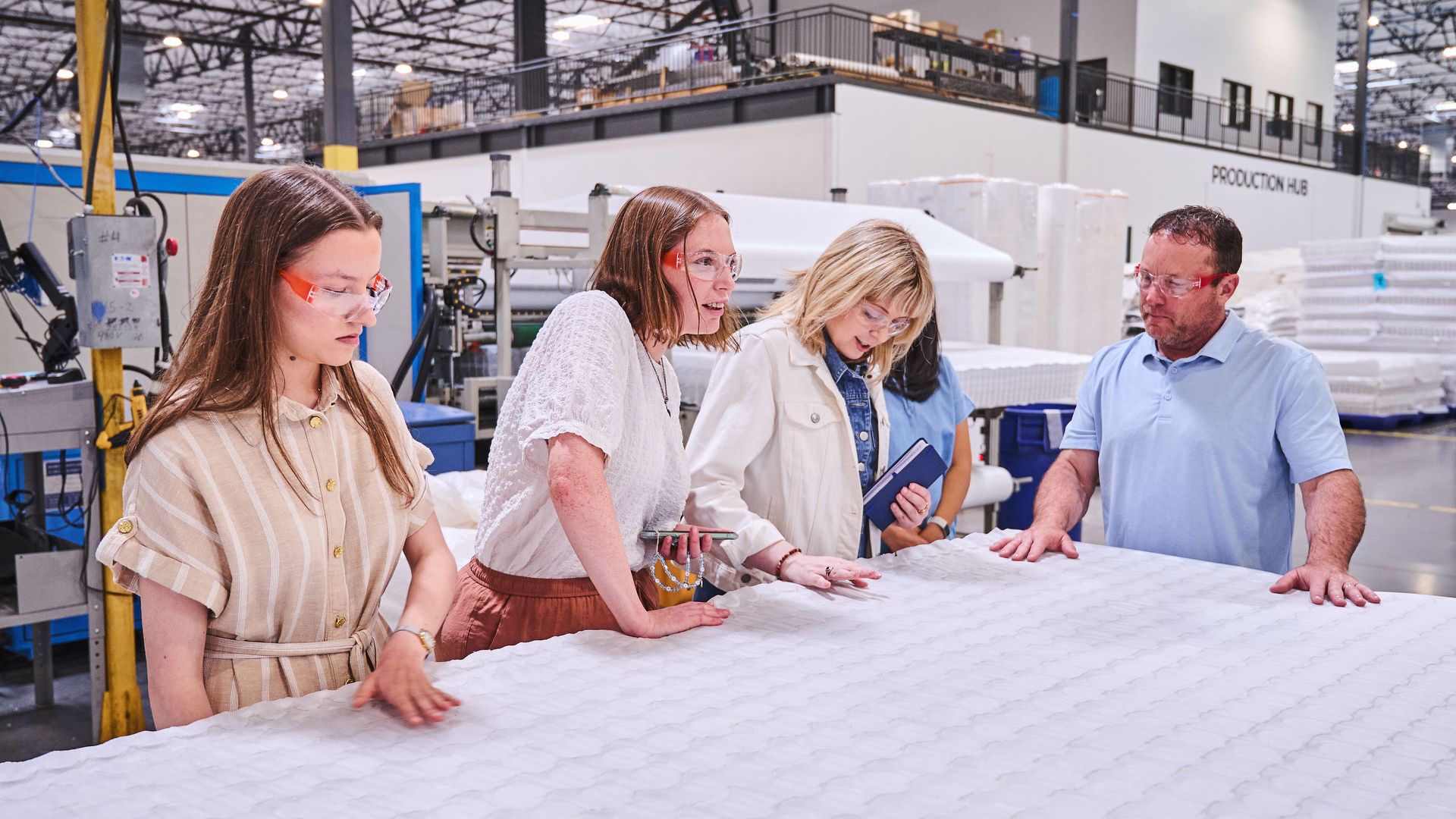
Have you ever thought about the foams in your mattress and the role they play in helping you sleep better? I've been reviewing mattresses for half a decade and have learned a lot in my career as a 'Professional Goldilocks,' but finally seeing how the mattresses I test are made has given me a fresh perspective on the work I do.
I joined the Tom's Guide sleep team on a trip to 3Z Brands in Arizona for a behind-the-scenes look at how some of the best mattresses are put together. Our time there included a factory tour and a hands-on session where we 'built' our own mattresses. Through those experiences, I developed a better understanding of just how much the foams of a mattress (and how it's constructed) can impact its feel.
Whether you’re a sleep nerd like me, or keen to do some research before diving into the best mattress sales, check out this guide to the types of mattress foams and how they’re used — then use this knowledge to help you land the bed of your dreams.
The 3 types of foam used in mattresses
1. Memory foam
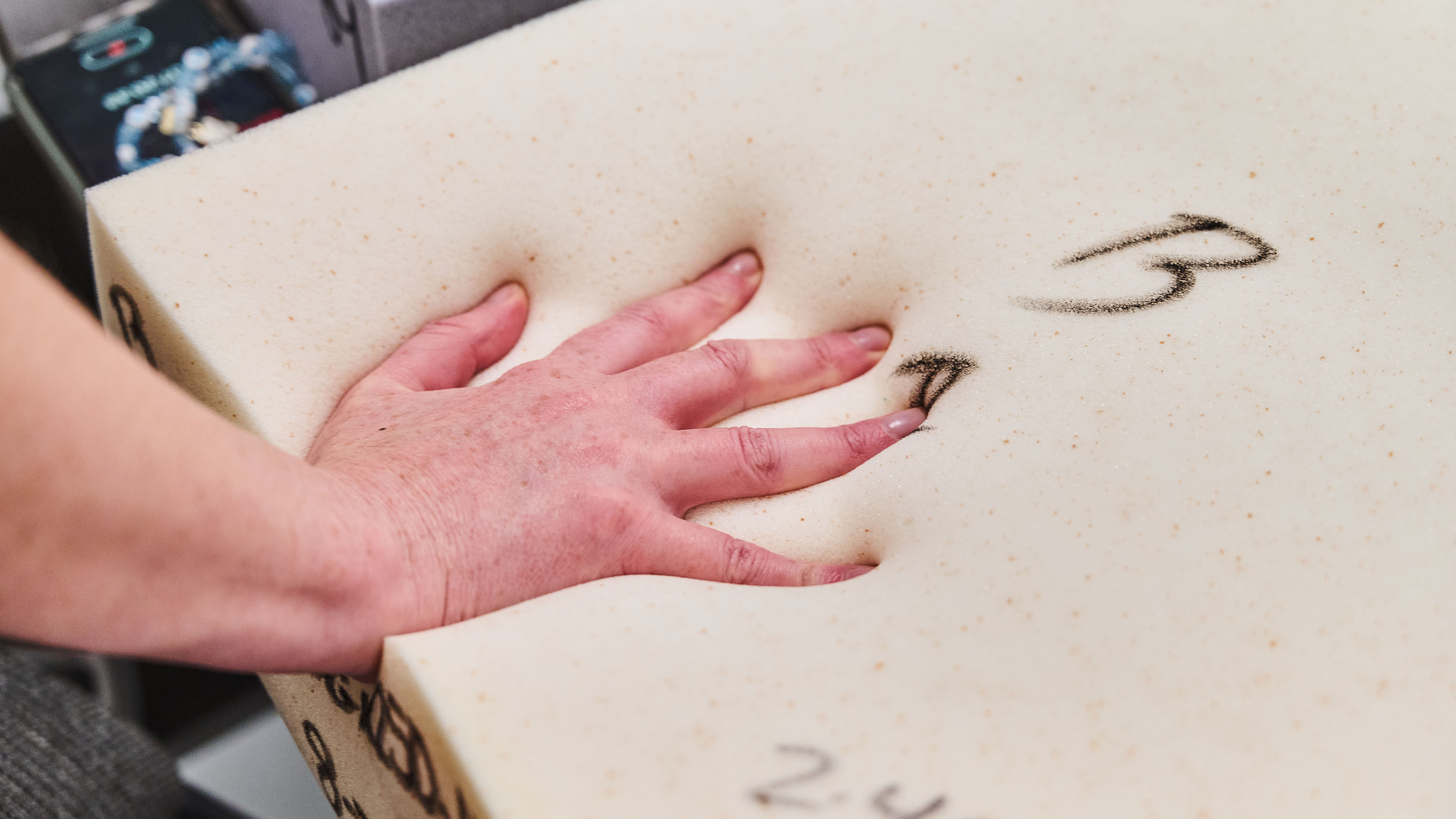
Memory foam, also known as viscoelastic polyurethane foam, is a slow-responding material that reacts to heat and pressure, allowing it to conform to the shape of your body. (Thus, it's often used as a comfort layer or in a pillow top.) Compounds added to polyurethane during production by different manufacturers of memory foam will affect its viscosity and elasticity.
The density of memory foam will influence its performance. Denser foam is more durable, delivers deeper contouring, and isolates motion exceptionally well. Foam density is measured in pounds per cubic foot (PCF), and while some recommend 3 to 5 PCF as a mid-range for memory foam, we'd suggest that 2.5 PCF is the sweet spot.
Higher-density memory foam is more likely to trap heat. To counter this, many brands infuse memory foam with cooling gel or heat conductors such as graphite and copper. Advanced cooling mattresses may add phase change materials (PCM) to memory foam to draw in and release heat for better temperature regulation.
2. Polyfoam
Polyurethane foam (or polyfoam) is a springy, responsive material that can be used across various mattress layers. It's less dense than memory foam, with a mid-range density of 1.5 to 1.7 pounds per cubic foot (PCF). Polyfoam doesn't hug the body as tightly as memory foam, nor does it isolate movement as well.
Polyfoam is either uniform with a smooth, even surface or convoluted with an 'egg crate' formation. Uniform polyfoam can be used in any part of a mattress but convoluted foam is typically used as a transition layer or as a standalone mattress topper.
Due to its lower density, polyfoam is less likely to retain heat than memory foam. It’s also a more affordable material, commonly found in budget mattresses. On the other hand, polyfoam isn't as durable and supportive as memory foam or latex.
3. Latex foam
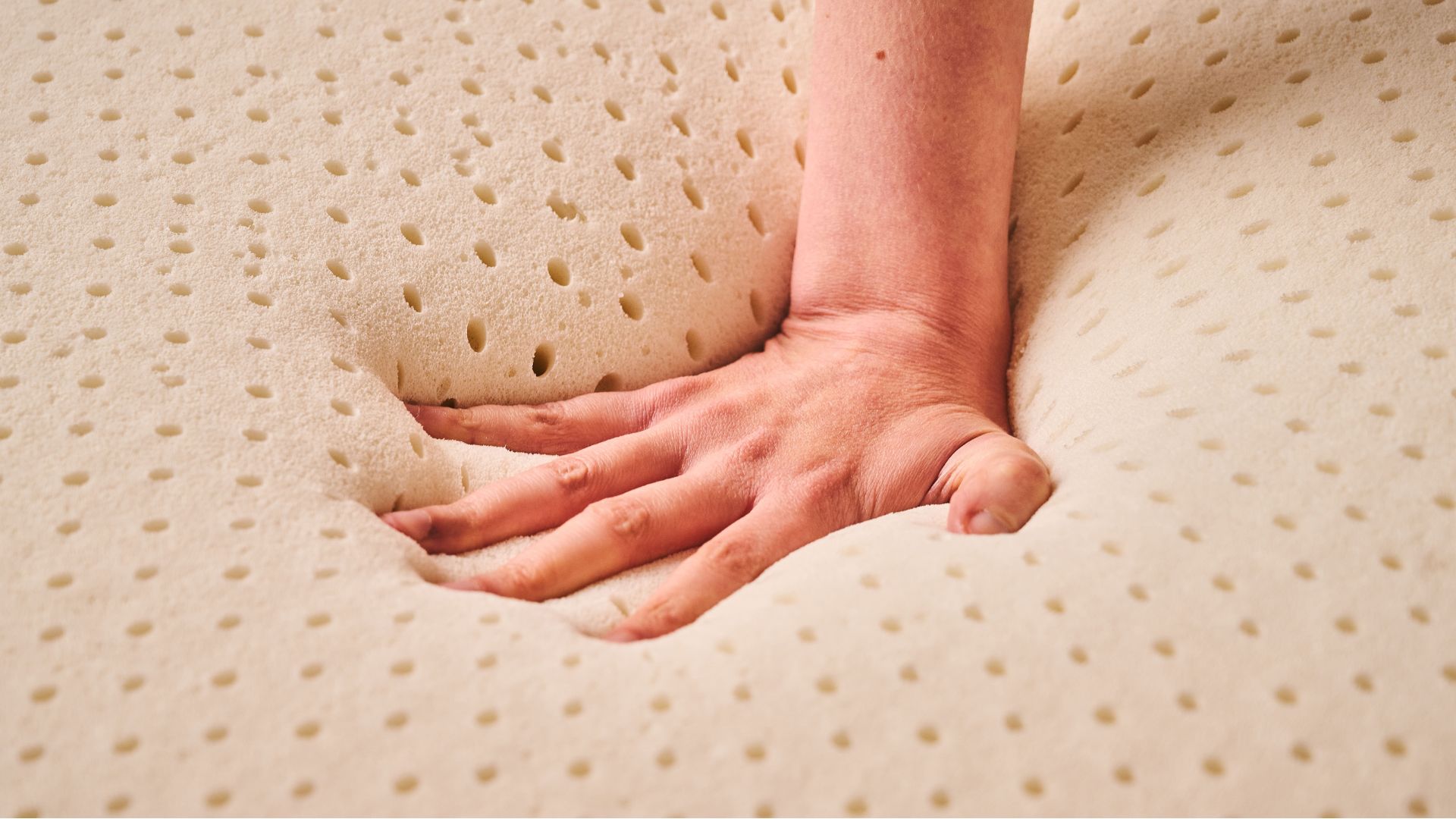
Latex foam comes in two types: synthetic and natural. Synthetic latex is made from petroleum-based chemicals, while natural latex is produced by combining rubber tree sap with non-toxic chemicals to create a froth that's then baked into a foam.
Natural latex is created using the Talalay or Dunlop method, which affects the feel of the material. Talalay latex is softer and more breathable, making it suitable for the upper layers of a mattress. Dunlop latex is denser and more durable, so it's often reserved for the bottom layers of a mattress. Synthetic latex can be firm or soft, but it's not as buoyant or breathable as natural latex. Blended latex foam, which combines synthetic and natural materials, offers a mix of these characteristics.
Latex foam is more expensive than polyfoam or memory foam — and natural latex commands an even higher premium due to its strict production process, especially when used in the best organic mattresses. Natural latex is also known for its outstanding durability; it can last up to 20 years with proper care, far exceeding the lifespan of other types of foam.
4 ways foam layers are used in a mattress
1. Pillow-top or Euro-top
A pillow-top mattress has a layer of padding sewn on top for a plusher surface and a more luxurious appearance. This padding is usually memory foam or latex, but other materials like cotton and wool may be used.
Similarly, a Euro-top mattress adds a layer of foam or fiberfill, but unlike a pillow top, a Euro-top is built underneath the mattress cover for a neater look and a firmer, more supportive sleep surface. Despite their differences, some sleep brands use both of these terms interchangeably.
2. Comfort layers
The comfort layers of a mattress are designed to contour your body and relieve pressure from your shoulders, hips, and back. Unless you have a luxury mattress with a pillow-top or Euro-top, these comfort layers will create your first impression of a mattress (no pun intended).
Memory foam is a popular material for comfort layers because its body-hugging sensation is great for pressure relief. Its density also makes it effective at isolating motion, which is beneficial for bed-sharers. To prevent heat retention, memory foam comfort layers are often infused with cooling agents.
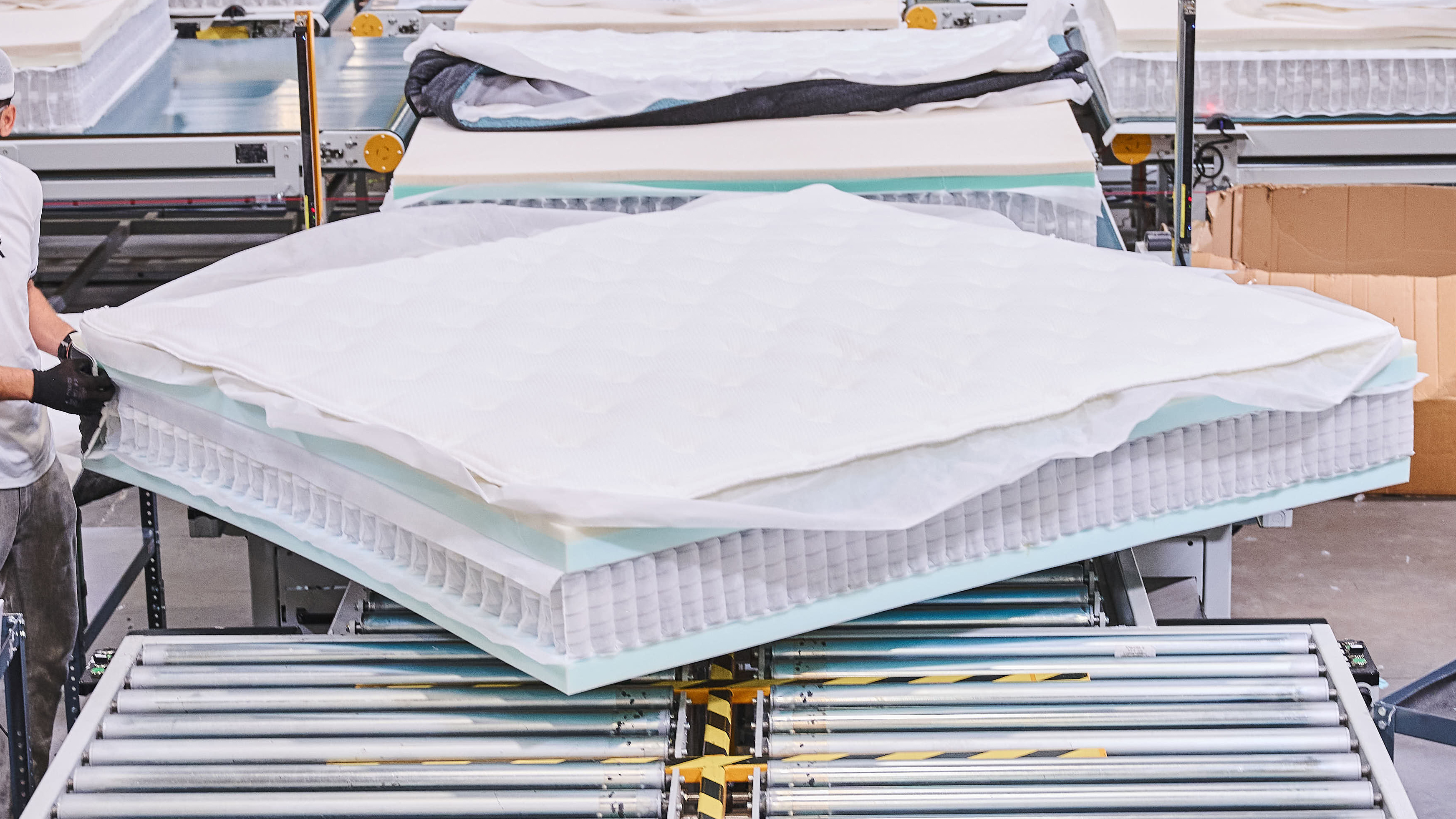
Polyfoam is commonly used in the comfort layers of budget mattresses. While it's less contouring and won't dampen motion as effectively as memory foam, it’s easier to move around on and won't trap as much heat.
Natural latex is often used in the comfort layers of organic mattresses. It's more breathable than synthetic foams with a responsive, bouncy feel. This is helpful for ease of movement but not so much for motion isolation. Natural latex doesn’t mold quite like memory foam, but it will gently cradle your body for pressure relief.
3. Transition layer
The transition layer is the unsung hero of mattresses. Its main role is to act as a buffer between the comfort layers and the foundation layer, especially in hybrid mattresses that include layers of both coils and foam.
However, the firmness and thickness of this foam layer can impact the overall feel of the mattress by either enhancing the plushness of the top layers or reinforcing the support of the bottom layers. Dense polyfoam and latex foam work well as transition layers. Due to its elasticity, memory foam isn't really used here.
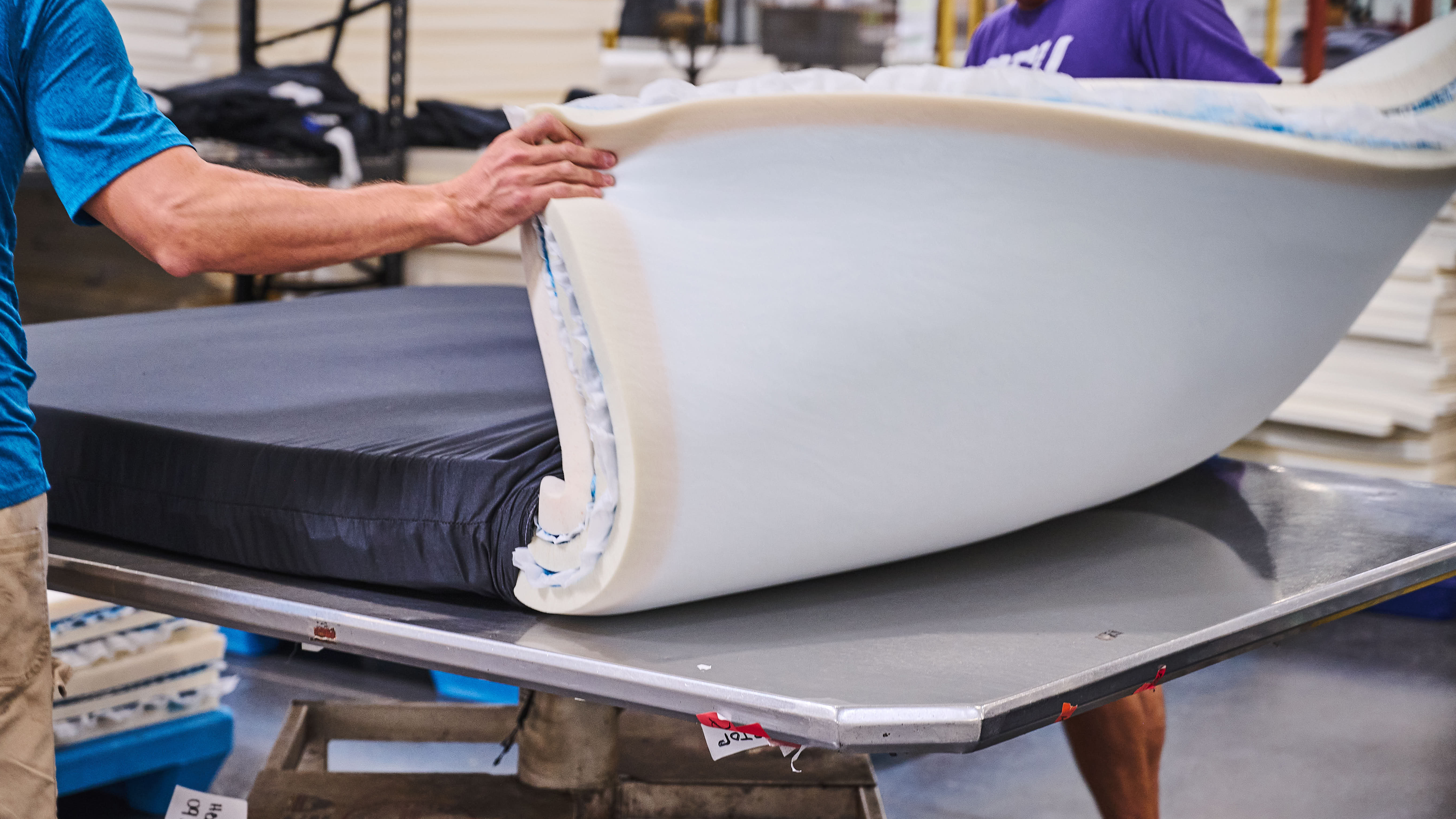
4. Foundation layer
The foundation layer keeps a mattress stable and promotes proper alignment. In an all-foam mattress, this is usually a high-density block of polyfoam that typically measures between 6" and 10" tall. Organic mattresses that don’t have pocket coils may use Dunlop latex as a foundation.
In a hybrid mattress, the foundation layer is typically 1" to 2" of high-density polyfoam or latex placed underneath the support coils. Some hybrids have high-density polyfoam rails around the perimeter of the pocket coil layer for reinforced edge support.
Matttress foam FAQs
What is open cell foam?
Open cell foam is a soft, pliable material characterized by the structure of its cells, which are more like interconnected air pockets. Some sleep brands heavily market open cell foam as a feature for more breathable sleep — but all modern mattresses use open-cell foam.
By comparison, closed cell foam is rigid, dense, and water-resistant, with minimal airflow since the cells are tightly packed. Thus, it's used for insulation, packing materials, and even yoga mats.
Are foam mattresses good for hot sleepers?
The general rule for hot sleepers is to avoid all-foam mattresses because of their propensity to trap heat. However, there are exceptions. The best memory foam mattresses incorporate specialized materials to draw heat away from the surface. These may include cooling covers woven with heat-wicking fibers, foam infused with cooling gel or phase change materials (PCM), and perforated foam to help improve airflow.
Hybrid mattresses are usually a better bet for hot sleepers because the coils allow heat to circulate — but the comfort layers could impede that if they're too dense and lack any cooling properties. Meanwhile, natural latex is very breathable and a great choice for sleepers who want to sleep cooler at night.
Can a memory foam mattress cause back pain?
Any mattress can cause back pain if it's not the right fit for your sleep style and body type. If you want a memory foam mattress for back pain, look for a medium-firm or firm level of comfort.
Experts we've consulted on the matter say a good mattress for back pain should achieve the balance of support and relief you need to ensure your spine is aligned and your pressure points aren't triggered. A mattress that's too soft can create more problems than it solves.







